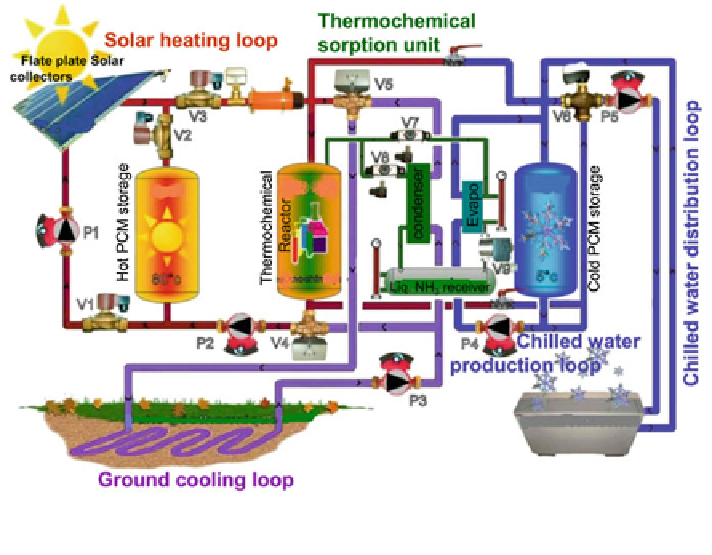Civil Engineering Reference
In-Depth Information
Fig. 11 Schematic description of the solar air-conditioning thermochemical pilot plant (Stitou
et al.
2012
)
energy (as input) desorbs the reactive gas (ammonia) from the reactor to the
condenser, where the gas gets condensed and collected in the condenser tank.
The condensation of the gas takes places, since the diurnal temperature (or the
outdoor temperature) is higher than the nocturnal temperature. The condensation
temperature of the reactive gas determines the highest possible operating pressure
that could be attained by the system.
In the nocturnal period (or night-time), the reactor starts to absorb the reactive
gas from the condenser, since the reactor is in the cooled state. Due to the pressure
gradient between the reactor and the evaporator which are coupled together, the
boiling and evaporation of the ammonia gas take place in the evaporator.
By this, the cooling effect is produced in the evaporator, which can be effec-
tively stored using a separate cold storage facility integrated to this system. On the
other hand, the evaporated reactive gas is absorbed by the reactor, producing heat
of absorption at the nocturnal atmospheric temperature.
4.9.6 Floor Heating System Using Thermochemical Energy Storage
System
The solar thermal long-term heat storage system using the composite of zeolite and
salt materials has been developed by the CWS-NT (Chemische Wärmespeicherung—
Niedertemperatur). This system essentially consists of a solar thermal combisystem

